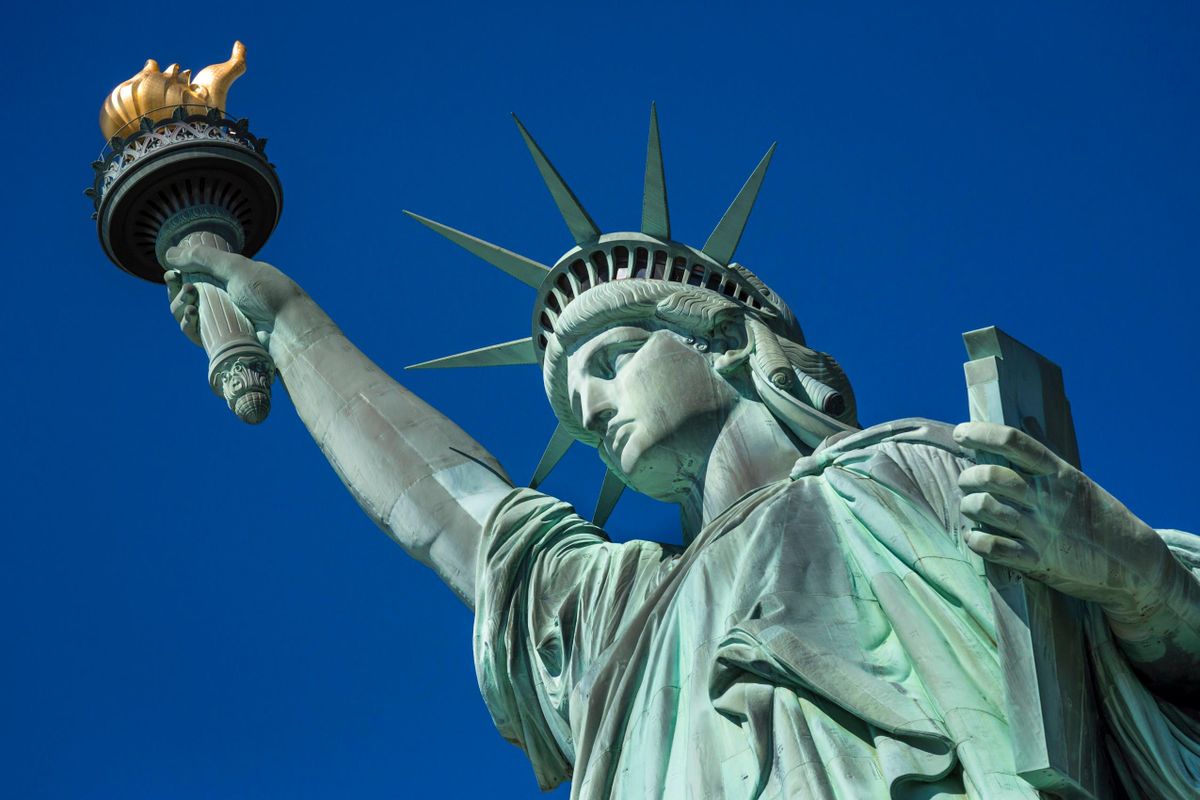dedej
Active Member
- Joined
- May 25, 2019
- Messages
- 107
- Reaction score
- 182

Lady Liberty was inspired by the end of the Civil War and emancipation. The connection to immigration came later.
Gillian Brockell
May 23 at 7:30 AM
The new Statue of Liberty Museum in New York Harbor boasts a number of treasures: the original torch, which was replaced in the 1980s; an unoxidized (read: not green) copper replica of Lady Liberty’s face; and recordings of immigrants describing the sight of the 305-foot monument.
It also revives an aspect of the statue’s long-forgotten history: Lady Liberty was originally designed to celebrate the end of slavery, not the arrival of immigrants. Ellis Island, the inspection station through which million of immigrants passed, didn’t open until six years after the statue was unveiled in 1886. The plaque with the famous Emma Lazarus poem wasn’t added until 1903.
“One of the first meanings [of the statue] had to do with abolition, but it’s a meaning that didn’t stick,” Edward Berenson, a history professor at New York University and author of the book “The Statue of Liberty: A Transatlantic Story,” said in an interview with The Washington Post.
“They talked about the idea of creating some kind of commemorative gift that would recognize the importance of the liberation of the slaves,” Berenson said.
theory has her face being adapted from a statue Bartholdi had proposed for the Suez Canal, meaning her visage could resemble that of an Egyptian woman. The Times reported she was based on the Roman goddess Libertas, who typically wore the type of cap worn by freed Roman slaves.
In the final model, Lady Liberty holds a tablet inscribed with the Roman numerals for July 4, 1776. The broken chains are still there though, beneath her feet, “but they’re not all that visible,” Berenson said.
National Park Service. And sailing into New York Harbor, he spotted the perfect location for it: Bedloe’s Island, then occupied by the crumbling Fort Wood.
Fundraising in both France and the United States took awhile, and according to the NPS, Bartholdi cast the project in the broadest terms possible to widen the net of potential donors. He also built the torch-bearing arm to tour around and inspire people to open up their wallets.

Bartholdi finished building the statue in Paris in 1884. Two years later, he oversaw its reconstruction in New York. “Liberty Enlightening the World” was “unveiled” on Oct. 28, 1886 — but that did not involve a very big sheet. Instead, there were fireworks, a military parade, and Bartholdi climbing to the top and pulling a French flag from his muse’s face.
By then, “the original meaning of the abolition of slavery had pretty much gotten lost,” Berenson said, going unmentioned in newspaper coverage.
In fact, black newspapers railed against it as meaningless and hypocritical. By 1886, Reconstruction had been crushed, the Supreme Court had rolled back civil rights protections, and Jim Crow laws were tightening their grip.
In his book, Berenson quotes an 1886 editorial in the black newspaper the Cleveland Gazette: “Shove the Bartholdi statue, torch and all, into the ocean until the ‘liberty’ of this country is such as to make it possible for an industrious and inoffensive colored man in the South to earn a respectable living for himself and family … The idea of the ‘liberty’ of this country ‘enlightening the world,’ or even Patagonia, is ridiculous in the extreme.”
W.E.B. Du Bois also mentioned this in his autobiography, recalling seeing the statue upon arriving back in the United States in 1894 after two years in Europe: “I know not what multitude of emotions surged in the others, but I had to recall [a] mischievous little French girl whose eyes twinkled as she said: ‘Oh, yes, the Statue of Liberty! With its back toward America, and its face toward France!’”
There were immigrants on board that ship with Du Bois, but he didn’t talk to any of them. The ship was segregated.
https://www.washingtonpost.com/hist...igrants/?noredirect=on&utm_term=.73fd61f9863b





